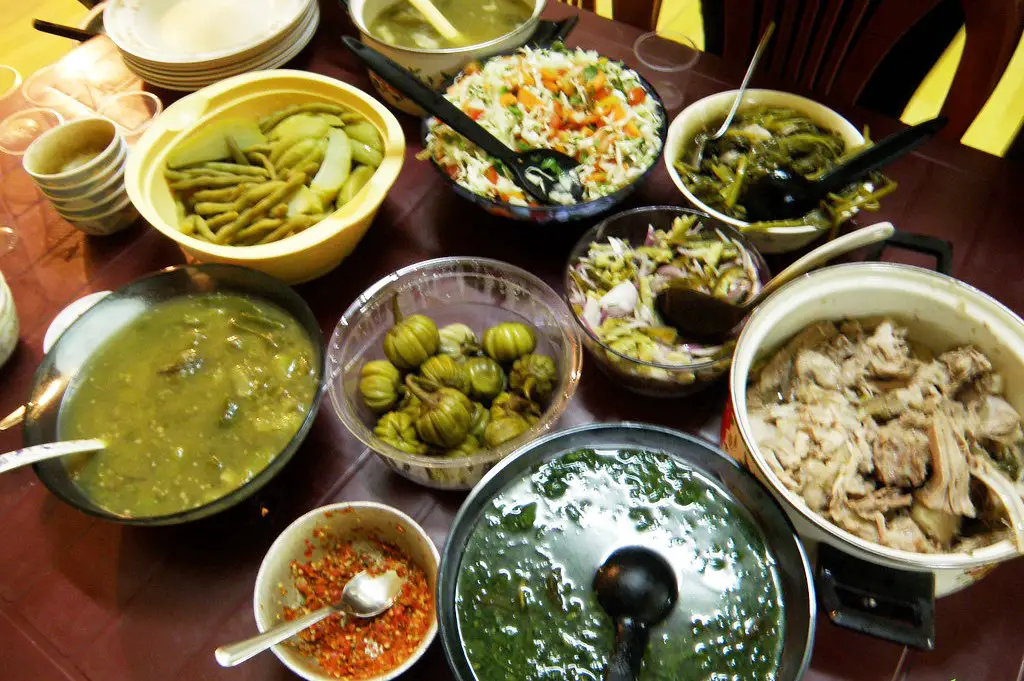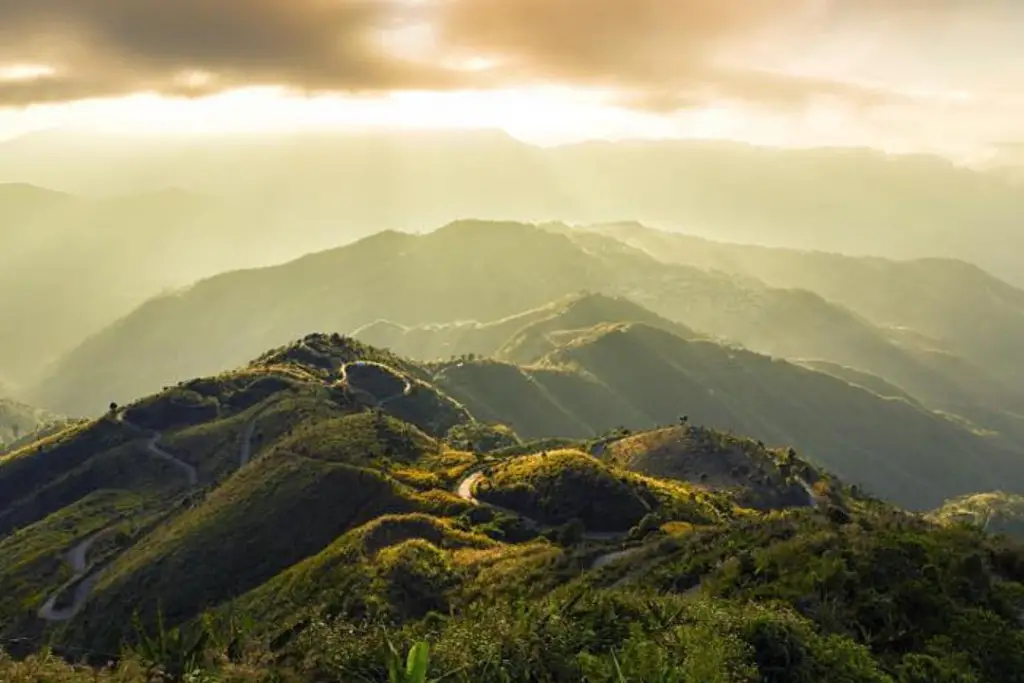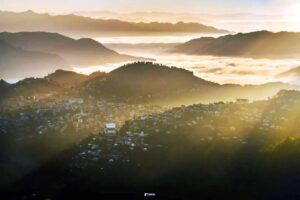Nestled amidst the emerald embrace of Mizoram, lies Saiha – a land where untouched splendor dances with vibrant culture. As you navigate the winding roads, prepare to be spellbound by the serene grandeur of lofty hills and lush greenery. This hidden gem in India’s northeast promises an escape from the ordinary, an adventure for the soul seeking solace and awe-inspiring vistas.
Situated in the southern tip of Mizoram, Saiha stands as one of the eight districts within the state’s borders. It shares its boundaries with Lunglei District to the north and Lawngtlai District to the west, while its eastern and southern perimeters extend to an international border with Myanmar. The predominant residents are the Mara people, who govern themselves through the Mara Autonomous District Council.
Major Attractions in Saiha
1. Saiha Town

Saiha, emerging as the most rapidly growing town in Mizoram, has witnessed a remarkable population boom in the last decade, solidifying its status as a thriving hub. Situated within the picturesque Saiha district of Mizoram, this census town graces an average elevation of 729 meters above sea level, offering not just growth but also breathtaking landscapes. Known for its scenic beauty and tranquil surroundings, Saiha has become a sought-after destination for those seeking respite from urban hustle.
Beyond its demographic surge, Saiha is celebrated as a haven for angling enthusiasts, drawing them to its serene waters. The town’s nomenclature carries a fascinating tale. Initially named Siaha, where ‘Sia’ symbolizes an elephant and ‘ha’ signifies tooth, representing an elephant’s tooth, the town has embraced the traditional designation of Saiha among the Mizos. This amalgamation of growth, natural allure, and cultural history makes Saiha a captivating destination for both residents and visitors alike.
2. Pioneer Missionary Bungalow Saikao

Located between Tuipang and Kaladan, Serkawr stands as a historical crossroad, showcasing the Pioneer Missionary Bungalow Saikao. Constructed in 1914 by Christian missionaries, this venerable villa serves as a living testament to the indelible legacy of J. Herbert Lorraine and F.W Savidge. These pioneers played a pivotal role in shaping the course of civilization, fostering literacy, and spreading Christianity in the enchanting town of Saiha.
Today, the custodian of this rich history is Mrs. Violet Lorrain Foxall, the gracious granddaughter of J. Herbert Lorrain. With open arms, she welcomes visitors into the hallowed halls of this century-old house, where time seems to stand still. The historic ambiance is carefully preserved, showcasing not only the architectural grandeur of a bygone era but also the exquisite furnishings and decorations that have weathered the sands of time. Stepping into the Pioneer Missionary Bungalow Saikao is like embarking on a journey through the annals of Saiha’s history, a captivating narrative preserved in wood, stone, and the warmth of Mrs. Violet Lorrain Foxall’s hospitality.
3. Pala Tipo – Palak Lake

Palak Dil emerges as a mystical expanse, claiming the title of the largest natural lake in the region. Its enchanting oval shape spans approximately 1 sq. km, creating an otherworldly allure that captivates all who behold it. Nestled within virgin forests brimming with a rich tapestry of flora and fauna, Palak Dil weaves together a narrative of natural wonders and timeless legends.
This sacred body of water carries with it stories echoing through the ages, tales of origin that add an extra layer of mystique to its already ethereal charm. As one ventures into the vicinity, the melodies of nature become apparent, drawing in enthusiasts and birdwatchers alike. Palak Dil becomes a haven for diverse wildlife, welcoming wetland birds and serving as a seasonal stopover for migrating Pintail Ducks.
Accessing this haven of tranquility is facilitated by a jeepable road from Phura, ensuring that Palak Lake remains a well-preserved sanctuary of pristine landscapes and mythical allure. The journey to Palak Dil is not just a physical one but a spiritual odyssey, where the whispers of legends and the symphony of nature converge in harmonious serenity.
4. Tokalo Wildlife Sanctuary

Covering a vast expanse of 250 sq. km, the Tokalo Wildlife Sanctuary emerges as a verdant haven, securing its position as the second-largest wildlife reserve in Mizoram. Its designation as a sanctuary in 2007 marked a commitment to preserving and nurturing the rich biodiversity flourishing within its boundaries. Managed with dedication by the Environment and Forest Department of the Mara Autonomous District Council, Tokalo is a testament to the harmonious coexistence of diverse ecosystems.
As visitors step into this sanctuary, they are greeted by a thriving tapestry of life, from mammals to birds, amphibians, and the delicate dance of butterflies. The months between October and April provide an opportune window for exploration, inviting nature enthusiasts into the heart of Tokalo’s untamed wilderness.
Here, the landscape unfolds in a breathtaking spectacle, transitioning seamlessly between Moist Deciduous and Semi-evergreen Forests. The journey through Tokalo is not just a trek into the wild; it’s an immersion into the delicate balance of nature, where every rustle of leaves and birdcall tells a story of ecological resilience and cohabitation.
5. Castle Beino/Bawinu

Castle Beino is a spectacle often hailed as the Grand Canyon of Mizoram. Majestically gracing the banks of the Kaladan River, this natural wonder reveals its breathtaking beauty as the river gracefully meanders through imposing rock structures. To unlock the secrets of Castle Beino, a mesmerizing motorboat journey awaits, guiding adventurers from the quaint village of Lomasu to the enchanting Saphaw.
The transparency of the Kaladan River serves as a pristine canvas, capturing the intricate reflections of Castle Beino’s grandeur. As you navigate the crystalline waters, each turn of the river unveils a new facet of this geological marvel. The opportune time to embark on this exploration is from February to May, a period when Castle Beino transforms into a haven for wildlife enthusiasts and avid birdwatchers. Immerse yourself in the serenity of this hidden gem, where nature’s wonders converge in a symphony of rock formations and vibrant ecosystems.
Culinary Flavours of Saiha

The culinary landscape of Saiha is a haven for non-vegetarians seeking a delightful gastronomic experience. Mizos have a profound love for non-vegetarian delicacies, making the region a paradise for those with a penchant for meaty delights. While Saiha may not boast major restaurants or food chains, the town compensates with its local charm and flavors.
Within the town of Saiha itself, the culinary scene is characterized by vibrant roadside stalls. These local vendors contribute to the unique flavors of Saiha, offering a taste of the region’s authentic street food. Exploring these stalls provides an opportunity to savor the local delicacies, interact with friendly locals, and immerse oneself in the genuine flavors that define the culinary experience in Saiha. From savory meat dishes to flavorful street snacks, Saiha invites food enthusiasts on a journey of discovery through Mizoram’s delectable non-vegetarian offerings.
Best Time To Visit Saiha
The best time to visit Saiha is between November and May, offering a temperate climate that avoids the extremes found in other regions. Saiha’s weather is characterized by moderate temperatures, ensuring that summers are less scorching compared to other parts of the country, and winters are comfortably mild without cold conditions.
While Saiha experiences a substantial amount of rainfall during the monsoon season, the period from November to May emerges as the most favorable for travel. During these months, visitors can revel in the pleasant climate, making it conducive to outdoor activities and sightseeing.

How to Reach
By Air:
The nearest airport is Aizawl, approximately 167 kilometers away. Aizawl airport provides flights connecting to various cities across India, ensuring seamless air travel. Helicopter services are available on Mondays and Saturdays.
By Road:
Saiha’s district headquarters maintains excellent road connectivity with Aizawl through NH54, facilitating a journey of about 12 hours. Regular buses and private taxis ply this route, making transportation easily accessible. Local transport within Saiha, including affordable auto-rickshaws, ensures convenient mobility throughout the district.
By Rail:
The nearest railway station is Silchar, located 258 kilometers from Saiha. Although the rail network is currently in the developmental phase, tourists can access this mode of transportation for their journey.
It is to be noted that an Inner Line Permit (ILP) is required for non-locals to enter and stay in the Indian state of Mizoram.
(Details on how to obtain an ILP are discussed in one of our earlier articles)






